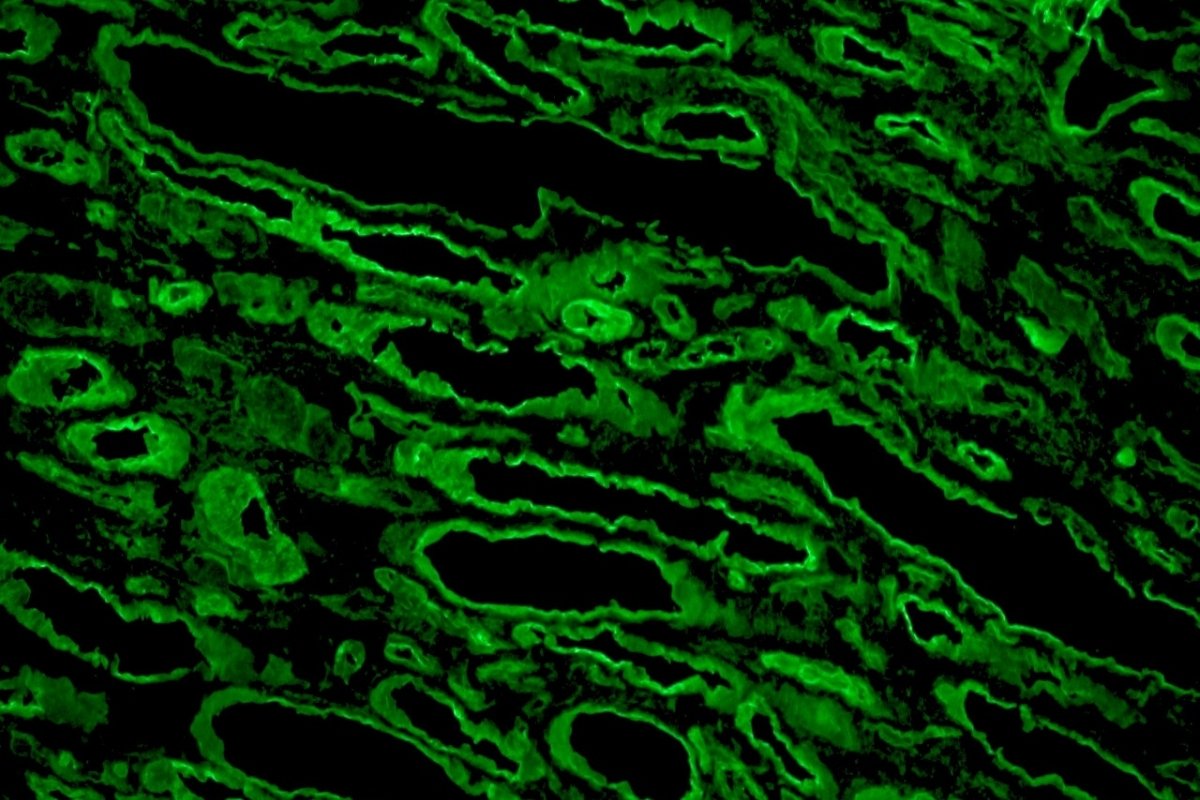
Laminin is a protein that plays a crucial role in the body. Found in the extracellular matrix, it helps cells stick together, providing structural support. Without laminin, tissues wouldn't hold their shape. This protein is vital for cell differentiation, migration, and adhesion. Laminin's structure resembles a cross, which has intrigued both scientists and those with religious beliefs. Understanding laminin can shed light on various medical conditions, including muscular dystrophy and cancer. Did you know that laminin is essential for wound healing? It helps cells move to the injury site, speeding up recovery. Curious about more laminin facts? Keep reading to discover 29 fascinating insights about this incredible protein.
What is Laminin?
Laminin is a protein found in the extracellular matrix, which is a network of molecules outside cells. This protein plays a crucial role in tissue structure and cell behavior. Let's dive into some fascinating facts about laminin.
-
Laminin is a glycoprotein, meaning it has both protein and sugar components.
-
It forms a cross-like structure, which is essential for its function in the body.
-
Laminin is a key component of the basement membrane, a thin layer that supports cells and tissues.
-
It helps cells stick to each other and to the extracellular matrix, providing structural stability.
-
Laminin influences cell differentiation, which is the process by which cells become specialized.
Laminin's Role in Health
Laminin is not just a structural protein; it has significant implications for health and disease.
-
It plays a role in wound healing by helping cells migrate to the injury site.
-
Laminin is involved in the development of the nervous system, guiding nerve cells to their proper locations.
-
Mutations in laminin genes can lead to muscular dystrophy, a group of diseases that cause muscle weakness.
-
It is also implicated in certain kidney diseases, where the basement membrane is damaged.
-
Laminin has been studied for its potential role in cancer, as it can influence tumor growth and metastasis.
Laminin in Research
Scientists are continually uncovering new aspects of laminin and its functions.
-
Researchers use laminin in cell culture experiments to study cell behavior in a controlled environment.
-
It is used in tissue engineering to create scaffolds that support cell growth and tissue formation.
-
Laminin-based coatings are applied to medical devices to improve biocompatibility.
-
Studies have shown that laminin can enhance the survival and function of transplanted cells.
-
It is being explored as a potential therapeutic target for various diseases.
Laminin in Everyday Life
You might not realize it, but laminin has applications beyond the lab.
-
Laminin is used in skincare products for its potential to promote wound healing and skin regeneration.
-
It is found in some dietary supplements aimed at supporting joint and muscle health.
-
Laminin-based materials are being developed for use in regenerative medicine.
-
It is also used in veterinary medicine to treat injuries and support healing in animals.
-
Laminin's role in cell adhesion makes it a focus for developing new adhesives and coatings.
Fun Facts About Laminin
Let's look at some interesting tidbits about this amazing protein.
-
The name "laminin" comes from the Latin word "lamina," meaning "layer" or "sheet."
-
Laminin was first discovered in 1979 by researchers studying the basement membrane.
-
It is one of the largest proteins in the human body, with a complex structure.
-
Laminin can bind to other proteins, such as collagen and integrins, to form a strong network.
-
Different types of laminin exist, each with unique functions and properties.
Laminin and Evolution
Laminin has been around for a long time, playing a role in the evolution of complex organisms.
-
It is found in all multicellular animals, from simple organisms like sponges to humans.
-
The structure of laminin has been highly conserved throughout evolution, indicating its importance.
-
Studies suggest that laminin played a crucial role in the development of tissues and organs in early animals.
-
Understanding laminin's evolutionary history can provide insights into the development of complex life forms.
The Final Word on Laminin
Laminin is more than just a protein; it's a crucial part of our body's structure. Found in the extracellular matrix, it helps cells stick together, supports tissue repair, and plays a role in cell signaling. This protein's unique cross-like shape has even sparked interest beyond science, touching on philosophical and spiritual discussions.
Understanding laminin gives us a glimpse into the intricate design of our bodies. It highlights how every tiny component works together to maintain health and function. From its role in embryonic development to its involvement in disease processes, laminin is a key player in the biological world.
Next time you think about what holds us together, remember laminin. It's a small but mighty part of the complex system that keeps us functioning. Knowing about laminin enriches our appreciation for the incredible machinery inside us.
Was this page helpful?
Our commitment to delivering trustworthy and engaging content is at the heart of what we do. Each fact on our site is contributed by real users like you, bringing a wealth of diverse insights and information. To ensure the highest standards of accuracy and reliability, our dedicated editors meticulously review each submission. This process guarantees that the facts we share are not only fascinating but also credible. Trust in our commitment to quality and authenticity as you explore and learn with us.
